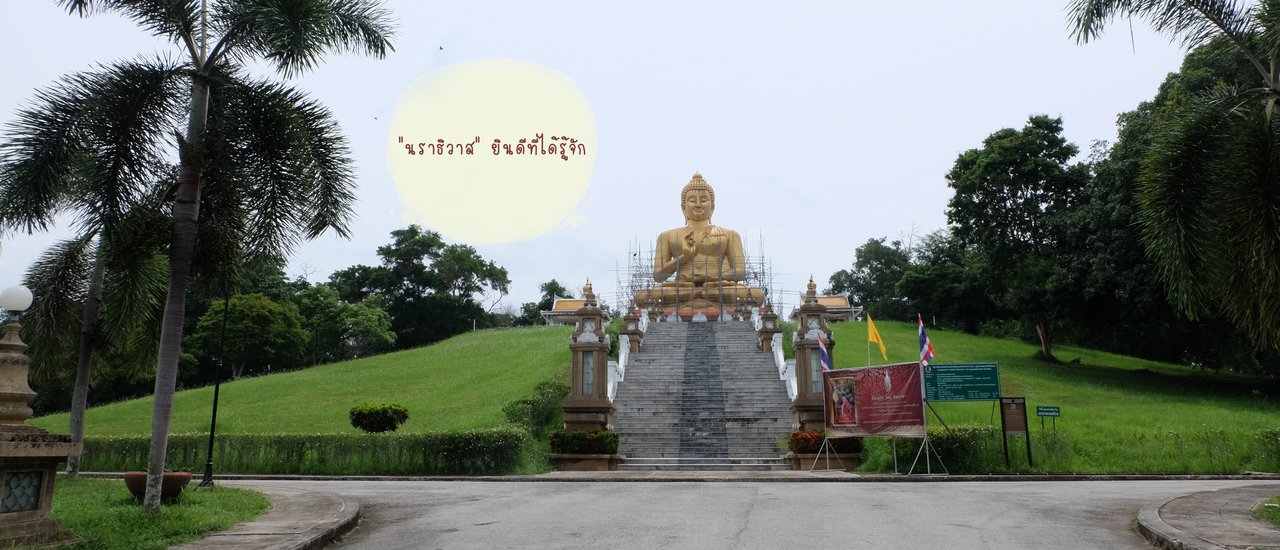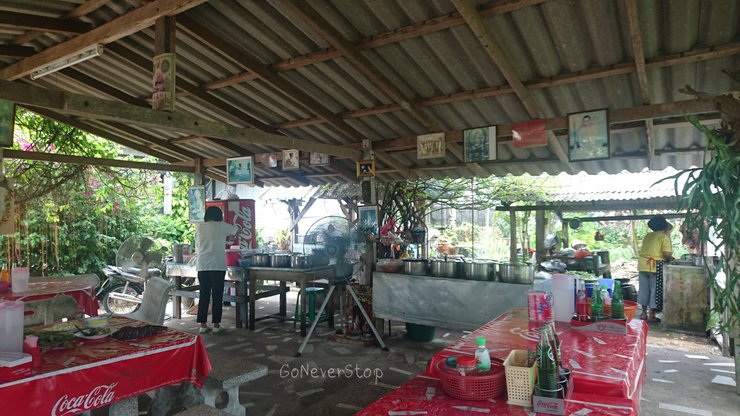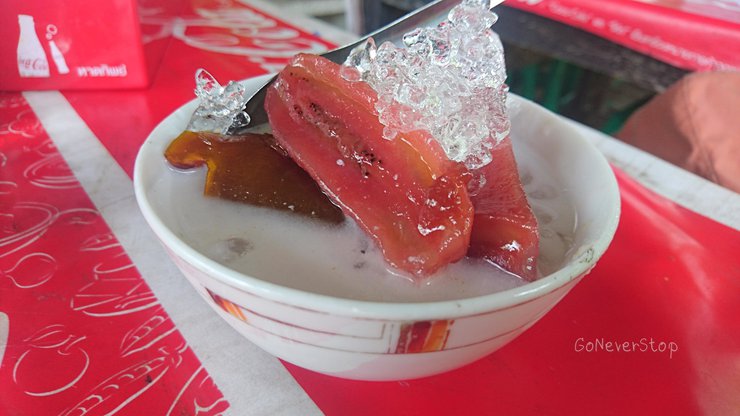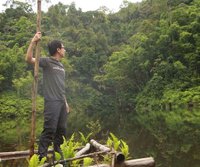"Consider this: if you don't go to Narathiwat this time, who else will invite you to go? It's not easy to find such opportunities."
This is our invitation. Normally, we go on solo trips, but this time, for our first trip to Narathiwat, we have a total of 4 members.
Planning the trip was straightforward as everyone had simple needs. We arranged the hotel, hired a car with a driver, and planned the itinerary. Flights were booked separately.
Eagerly awaiting the day of our journey. Let's go!
Day 1: The Southernmost Tip of Thailand at Su-ngai Kolok
Follow other episodes of the journey at
Narathiwat: Delighted to Meet You Day 2: Testing Fitness with Whitewater Rafting at Golden Mountain
"Narathiwat" Nice to meet you Day 3: Travel to Bang Nara
Departing by plane in the late morning, we landed at Narathiwat Airport. Although it may not seem like a popular tourist destination, the flight was surprisingly full. I had the opportunity to sit next to someone from Tak Bai district, which gave me a chance to ask about local attractions and the "pla klua" fish (which I was hoping to buy as a souvenir).

Upon arriving at the airport at noon, I asked my driver, Mr. Sun, to take me to a renowned restaurant for "khanom jeen" (rice noodles). He recommended "Jeam Khanom Jeen/Khanom Wan (Khon Ra Noad)", a restaurant where customers can choose their own dipping sauces. The atmosphere was relaxed and welcoming, reminiscent of dining at a relative's home.

A variety of curries are available, including jungle curry, fermented fish curry, fish curry, and chili paste, served with boiled eggs, fresh vegetables, and pickled vegetables in a buffet style.


To conclude, the dessert was only 10 baht per cup, which is an incredibly generous portion size rarely found in Bangkok.

After filling our stomachs, we headed towards Sungai Golok. Along the way, we stopped by Wat Khao Kong, one of the nine regional Buddhist parks and a project to celebrate the 60th anniversary of the reign of His Majesty the King. The highlight of this temple is the "Phra Phuttha Thaksin Ming Mongkhon" statue, which can be seen from the road as you drive by. Unfortunately, when we visited, the statue was undergoing renovations, so we were unable to capture its full splendor.


The journey is punctuated by encounters with soldiers, bunkers, barbed wire fences, and zigzag checkpoints. Wanted posters are commonplace, reflecting the troubled nature of this province. The sight of young soldiers standing guard in the scorching heat, some visibly exhausted, is particularly poignant.

Before entering the Pru Toh Daeng swamp, we stopped to buy drinks and akoh, a sweet Islamic dessert. It is a dessert that is said to be made only during festivals, but now it is made and sold regularly. The taste is like a mixture of mo kaeng and sangkhaya, which is delicious.

We then headed to Phrue To Daeng. The entrance to Phrue To Daeng is quite a distance from the main road, and the road passes through a village, so it is normal to see goats and sheep walking along the road. We arrived at Phrue To Daeng at around 3:15 pm, just before the 3:30 pm closing time. However, the officer told us that there had been an explosion in the area the day before, so they had ordered it to close earlier than usual. We were unable to enter, so we chatted with the officer for a while before leaving.

Sun took us to see the Su-ngai Kolok border checkpoint. The atmosphere was bustling with Malaysian cars returning from the Thai checkpoint. We got off to look around and take pictures with the sign that said we had once reached the southernmost border checkpoint of Thailand.

After that, check in to the accommodation, Greenview Hotel.

The accommodation has multiple rooms and is relatively new.

The room is spacious and comfortable, with ample amenities.


The bathroom is spacious, clean, and has strong water pressure.

The balcony offers a view of the city of Sungai Kolok.

After relaxing in the room for a while, we checked the map and saw that the Toh Moh Shrine was not far from the hotel. So we decided to walk there. The Toh Moh Shrine was originally located in Sukirin District, but it was moved to its current location in 1942. Legend has it that Toh Moh was a child prodigy with exceptional intelligence and wisdom. At the age of 16, she received a scripture from an immortal, making her a beacon of hope for those in need. A shrine was built in her honor to allow people to pay their respects and seek her blessings.

The provided text is empty. Please provide the text you want me to translate.
For dinner, we stopped by Wana Phochana Restaurant. The food was okay, but the oyster salad had a strange taste. It was a salad with chili sauce, which I didn't like very much. Oh, and if you're going to eat at this restaurant, be patient. Don't come starving because the chef cooks slowly and leisurely, one dish at a time. Expect a long wait.
The lights went out for a while while we were eating, which was a bit exciting.

We heard that there was a Su-ngai Kolok Walking Street today, so we decided to go and see what it was like. After sunset, most of the city was relatively quiet, except for the walking street, which was bustling with people.
You must pass through the scanner before entering. However, why is it that other entrances do not require scanning? Is it safe here?

The walking street offers a diverse range of goods, including clothing, household items, and food, primarily sold by Muslim vendors.



There is an abundance of food, but I can only eat a small amount because I had a heavy dinner.
Sweet and bite-sized chicken-stuffed roti.

La-sae, a rolled rice sheet dish with a curry sauce similar to the flavor of "gaeng sai bua pla tu" (lotus stem and mackerel curry), served with vegetables and shredded "da-la" flowers.

I really wanted to visit the tea shop and shaved ice shop again, but it was late and I was already full, so I decided to go home instead.
Please stay tuned for the next episode.
If you have any questions or suggestions, please visit our Facebook page GoNeverStop.
GoNeverStop
Tuesday, October 8, 2024 11:28 AM





















